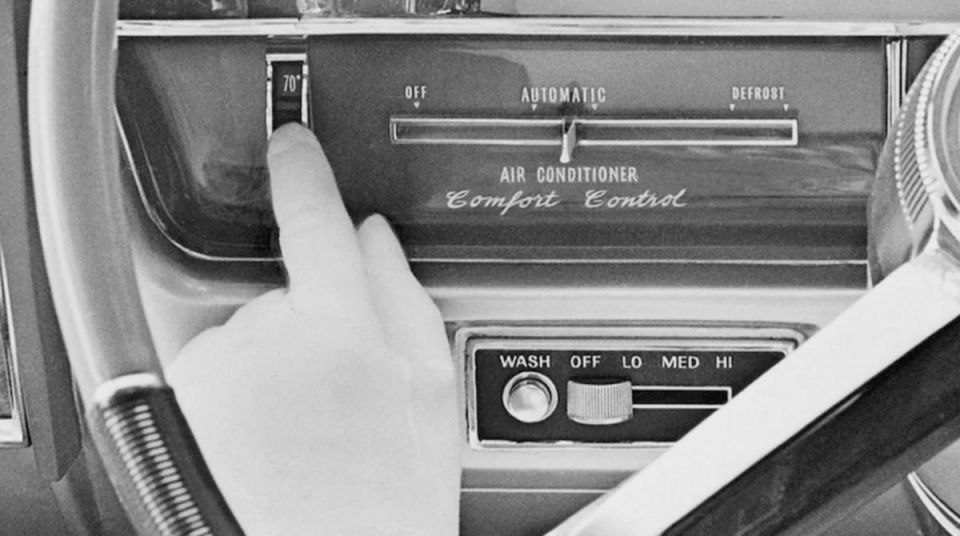

Jack Quick
8.4
6 Days Ago
Setting a desired temperature in your car is nothing new. But how do cars keep to this temperature and what are some recent innovations in this space?

Contributor


Contributor
Air-conditioning has been available in cars since the late 1930s when it was introduced as an option by defunct American luxury brand Packard.
As with most other innovations, air-conditioning systems have improved over time, with another American carmaker, Cadillac, being the first to market with an automatic climate control system that attempted to keep the air inside the car to a temperature set by the occupants.
Introduced in 1964 and fittingly named ‘Comfort Control’, it used three temperature sensors, known as thermal resistors, to detect air temperature outside and inside the car as well as at the air-conditioning ducts, to correspondingly control the operation of the system.

Almost 60 years later, air-conditioning systems have come a long way. Most cars today are now available with automatic climate control systems, and long gone are the days when constant fiddling of the fan and temperature controls was necessary to maintain a pleasant atmosphere inside the car.
Many systems on the market also help prevent the inevitable argument between driver and passengers as to what the ‘right’ temperature is, by having multiple climate control ‘zones’ that allow the driver and passengers to set their own temperature.
The operation and functionality of modern automatic climate control systems varies based on the model of car and manufacturer. Typically, however, most systems make use of multiple temperature sensors (at least two, to detect the external ambient air temperature and interior temperature of the car).
Other sensors that may be found include humidity sensors, to ensure a dry environment and also to control the operation of the A/C system such that the windows and windscreen don’t fog up.

A car’s interior is essentially a glasshouse, and many carmakers have attempted to compensate for the fact that direct sunlight will quickly warm up the car by introducing solar sensors. These can detect the position of the sun and the amount of sunlight hitting the car, and adjust the A/C system to take into account that the car may heat up more rapidly than normal.
Some models may also link the operation of their A/C systems to the car’s onboard GPS system, in order to better forecast what the weather at a particular location might be and to prepare the A/C system to adapt accordingly.
Other sensors that may be present include carbon dioxide/carbon monoxide sensors. Having less to do with adjusting the temperature, these may help switch the A/C system from recirculating to drawing in outside air automatically to maintain a fresh, healthy environment inside the car.
In every case, a microprocessor constantly samples and analyses inputs from each of these sensors, as well as taking into account information from other parts of the car such as engine speed and throttle load from this ECU.
This effectively creates a feedback loop that determines whether the car has to be heated or cooled to match the desired temperature, how fast the fan should operate in order to achieve this, and the most suitable type of airflow to ensure this happens quickly and efficiently (i.e. through what vents air should flow through).

Once the desired temperature has been reached, the A/C system may operate at a reduced power level or slower fan speed that simply ensures the set temperature is kept.
As mentioned in the introduction, many climate control systems today are marketed as having ‘dual-zone’ (or in some cases tri-zone or quad-zone) functionality. This simply means the system is equipped with multiple sets of sensors that allow the car’s interior space to be divided into different ‘zones’, with each zone having the ability to set their own temperature independently.
For example, a dual-zone system will usually allow the driver and front passenger to set their own temperature, while a tri-zone system will also enable the rear passengers to create a separate zone for themselves.
Note that an in-car A/C system can only put so much stress on the engine and other components of a car, and so may not allow the temperatures in zones to be completely the opposite. For example, the system may not function effectively, or may restrict occupants from setting the temperature in one zone to 16°C and the other zone to 27°C.

There is, of course, airflow between the zones, and so the set temperatures cannot be completely independent of one another. Instead, what is more plausible is a difference of a few degrees between the zones (e.g. one zone at 21°C and the other at 23°C).
Air quality systems are a notable innovation in air-conditioning typically found at the premium end of the market.
These systems include an air quality sensor mounted on the outside of the car (typically in the engine bay near the radiator grille) that’s able to determine how dirty the outside air is. If poor air quality is detected, the system automatically recirculates cabin air, switching back to drawing fresh air from outside when air quality improves.
This feature can be especially handy when driving in a congested area or through a tunnel, as the driver doesn’t have to remember to manually recirculate the air.
In many cases, air quality systems also feature an air cleaning system that may use an advanced air filter to clean the air of particulates and other pollutants.

Arguably the most famous of these is the Bioweapon Defense Mode available on the Tesla Model S, X and Y. This makes use of HEPA (High-Efficiency Particulate Air) air filters to dramatically reduce the amount of PM2.5 pollutants (i.e. particles with a diameter of 2.5 microns or less) in the air.
Volvo and Jaguar Land Rover are two other carmakers that have also begun equipping their vehicles with PM2.5 air filters that can ensure interior air quality remains excellent even in smoggy environments. Volkswagen also uses a similar technology known as Air Care in its latest models.
Other manufacturers are using technologies such as cabin air ionisation and charcoal filters that also aim to clean the air passing into the car.
In Australia, these features may be especially helpful during bushfire season or in the presence of smog created by hazard reduction burns, for example.
One of the most advanced climate control A/C systems available on the market today is Lexus’ Climate Concierge system, available on flagship models such as the LS sedan. Not only does this use advanced sensors such as infrared sensors to monitor the actual body temperature of occupants, it also combines operation of the A/C system with seat heating/cooling and steering wheel heating to achieve optimal comfort for passengers.
For example, on very cold days, the seats are first heated before the A/C system takes over to warm the air. On hot days, the reverse happens, with the seat ventilation operating first before the A/C system steps in to cool the interior.
Other more recent innovations include the integration of voice commands to operate the A/C system. For example, in vehicles equipped with Mercedes’ MBUX infotainment system, saying “Hey Mercedes, I’m cold” will increase the set temperature by a few degrees. Similar functionality is also available on the latest models from BMW and Tesla, among other brands.

Vehicle pre-conditioning, or the remote operation of a car’s A/C system to pre-heat or pre-cool the car via a smartphone app, is another recent development, and especially handy on particularly hot or cold days. This feature can ensure that the car’s interior is already at the desired temperature before entering.


Jack Quick
8.4
6 Days Ago


Matt Campbell
8.1
5 Days Ago


Max Davies
8
4 Days Ago


James Wong
8.1
3 Days Ago


James Fossdyke
2 Days Ago


CarExpert.com.au
2 Days Ago